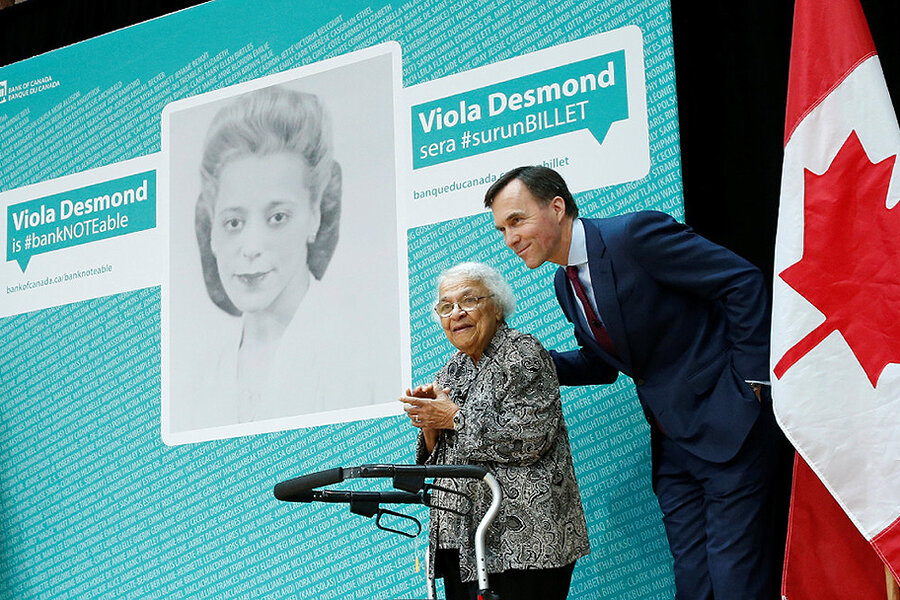Black woman who fought segregation to be face of Canada's $10 bill
Loading...
Nine years before Rosa Parks made civil rights history in the United States by refusing to give up her seat on a segregated bus for a white passenger, a black Canadian businesswoman named Viola Desmond took an anti-segregation stand of her own inside a Nova Scotia movie theater.
Ms. Desmond was arrested and fined in 1946 for sitting in the whites-only section on the theater's main floor instead of the section for black Canadians in the balcony. For fighting those charges – which included an allegation of tax evasion for the one-cent difference in price between the two seating sections – Desmond helped inspire the country's civil rights movement, and now will be honored by the Bank of Canada, as government officials announced Thursday.
After a lengthy review process involving 461 eligible nominees, Desmond was selected as the first Canadian woman whose portrait will appear prominently on the nation's bank notes, officials said, praising her as an icon of the advancement Canadians have made and continue to make.
"This spirit of activism is the force that allows us to make progress together as a society on difficult issues like racism, and sexism and inequality," Status of Women Minister Patty Hajdu said, as CBC News reported.
Desmond, who died in 1965, will appear on the $10 note beginning in late 2018, bank officials said, adding that a yet-to-be-selected honoree will be added to the $5 note as well.
The nation's first prime minister, Sir John A. Macdonald, and its first French-speaking prime minister, Sir Wilfrid Laurier, currently appear on $10 and $5 notes, respectively. To make way for the new honorees, Sir Macdonald and Sir Laurier will be moved to higher-value denominations, supplanting former prime ministers William Lyon Mackenzie King and Sir Robert Borden, who will no longer appear on Canadian currency, the bank said.
In announcing Desmond as the winner, Finance Minister Bill Morneau and Bank of Canada Gov. Stephen Poloz said the selection process was difficult but worthwhile, especially given the country's recent focus on promoting gender equity.
"I had the very, very difficult choice of finding just one," Minister Morneau said, as Bloomberg reported.
"Through this exciting process, with every mouse click or turn of a book’s page, with every kitchen table discussion or classroom debate, Canadians learned more about the iconic women who built Canada," Gov. Poloz said in a statement.
Although most Canadian currency features the Queen of England, Desmond will be the first Canadian woman by birth or naturalization to be portrayed on a bank note. She was selected from among a number of prominent women who met the eligibility requirements of demonstrating "outstanding leadership, achievement or distinction in any field" to benefit the Canadian people or country, and died at least 25 years ago.
Finalists included a poet who celebrated her Aboriginal heritage, the first female aircraft designer in the world, an Olympic silver medalist, and a suffragette.
Desmond's selection comes as Prime Minister Justin Trudeau has promoted gender equality across Canada, beginning with his own cabinet, following his win last year. And it comes after the Bank of England similarly honored novelist Jane Austen and the United States picked abolitionist Harriet Tubman to replace former US President Andrew Jackson on the $20 bill.
Although the notes featuring Ms. Tubman are slated to debut under the incoming administration of US President-elect Donald Trump, American officials suggested that they may release images of redesigned notes early in an effort to keep Mr. Trump from reversing their plans, as TIME reported.
This report contains material from Reuters.








